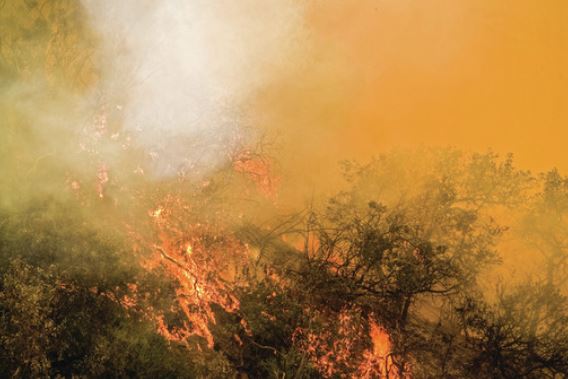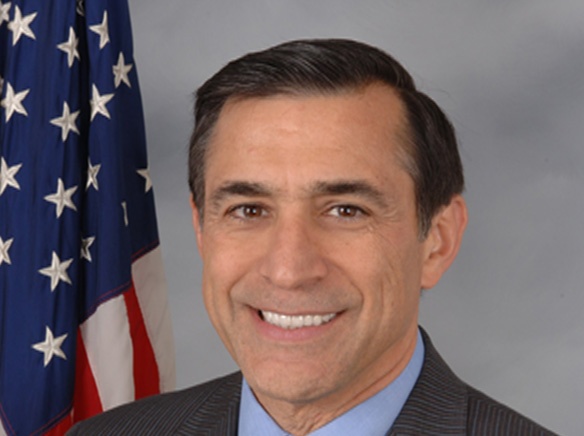The San Diego County Board of Supervisors approved a roadside vegetation management program intended to increase wildfire preparedness in unincorporated San Diego County.
The supervisors’ 5-0 vote July 13 approved an option with a comprehensive countywide approach to roadside vegetation management, directed the county’s chief administrative officer to return to the board within 90 days with a funding source and a timeline to implement the vegetation management program, and directed the chief administrative officer to continue stakeholder outreach on the Defensible Space for Fire Protection Ordinance and to return to the county supervisors within 90 days with a proposal to amend the ordinance to align it with the County Consolidated Fire Code.
“I think this is an important step,” said Board of Supervisors chair Nathan Fletcher.
“It’s extremely important,” said Supervisor Nora Vargas.
The county maintains nearly 2,000 miles of roadway, and nearly 80 percent of that roadway is in areas designated by the California Department of Forestry and Fire Protection as high or very high fire hazard severity zones. The San Diego County Fire Protection District works with the county’s Department of Public Works (DPW) to prioritize maintenance along county-maintained roadways which are considered critical evacuation corridors.
“We have a paramount responsibility to protect them as best as we can,” said Supervisor Terra Lawson-Remer.
“Evacuation is a real concern during a wildfire,” said Supervisor Jim Desmond. “Clearing roadways is going to be an important part of that.”
DPW typically undertakes maintenance on approximately 500 lane miles of roadway each fiscal year although the maintenance activity is planned to increase to 800 lane miles for Fiscal Year 2021-22. DPW performs vegetation management to a width of 20 feet from the roadway if that off-roadway area is part of the public right-of-way, and if the county has less than 20 feet of right-of-way DPW coordinates with property owners to pursue additional vegetation management.
“Wildfire is one of the biggest threats that we face,” Desmond said. “I think we need to do all we can to minimize the risk.”
On March 16 the Board of Supervisors directed the chief administrative officer to return to the board with an update on actions to increase vegetation management along county roads, to explore options to align sections of the county code to allow for 20 feet of clearance, to develop a program to expand vegetation management, to identify public roads which could benefit from additional vegetation management and a per-mile cost for that work, to determine the proposed frequency for vegetation management on specific road segments, and to return to the board with options to implement a new vegetation management program.
Three options were provided. The first option was enhancing the existing defensible space inspection program, which had an annual estimated cost of $594,991. The option to increase the focus on key evacuation corridors and on roads with single entry and exit points had an estimated annual cost of $1,779,000.
The supervisors chose the comprehensive countywide approach to roadside vegetation management even though it had the highest estimated cost at $2,643,031. The program will organize the county into north and south regions. The county fire department and DPW will collaborate with the California Department of Transportation (which is responsible for maintaining Interstate freeways and state highways), property owners, and independent fire protection districts. The program will focus on identifying and managing vegetation along evacuation corridors and communities with single entry and exit points. The San Diego County Fire Protection District will increase community engagement through direct mail and community-based workshops, the SDCFPD will collaborate with Caltrans to identify state roads which may benefit from additional vegetation management, and DPW will perform vegetation management on an additional 200 lane miles within the public right-of-way.
“Well-maintained infrastructure is a core responsibility of government,” Desmond said.
The current Defensible Space for Fire Protection Ordinance requires ten feet of vegetation management alongside roadways and driveways and allows the county’s fire warden to require additional vegetation management as necessary in accordance with the Consolidated Fire Code which allows jurisdictions to require a property owner to modify up to 20 feet of vegetation along roadways. The SDCFPD is in the process of reviewing current roadside vegetation management requirements and is working with the county’s independent fire protection districts.
“I really appreciate the board moving forward making our county more safe,” said Supervisor Joel Anderson.














